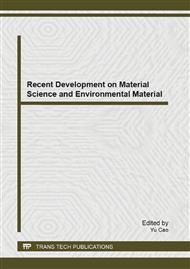p.35
p.40
p.44
p.48
p.53
p.58
p.62
p.67
p.72
Application of Priority Analysis and Algorithm Topsis in the Optimization of Ambient PM2.5 Monitoring Sites – Taking Beijing as an Example
Abstract:
Monitoring of PM2.5 is the emphasis of atmospheric environment management, and the first thing to do is the choice of monitoring sites. In this paper, we took Beijing as an example for its more serious PM2.5 pollution. Priority analysis on monitoring sites of PM2.5 was proceeded with the algorithm TOPSIS, and the 30 basic monitoring points was optimized into 11 effective and representative monitoring points. The model been used is simple, scientific and practical and there is a great sense of promotion. Keywords: PM2.5, monitoring sites, Priority Analysis, TOPSIS algorithm.
Info:
Periodical:
Pages:
53-57
Citation:
Online since:
September 2013
Authors:
Keywords:
Price:
Сopyright:
© 2013 Trans Tech Publications Ltd. All Rights Reserved
Share:
Citation:


